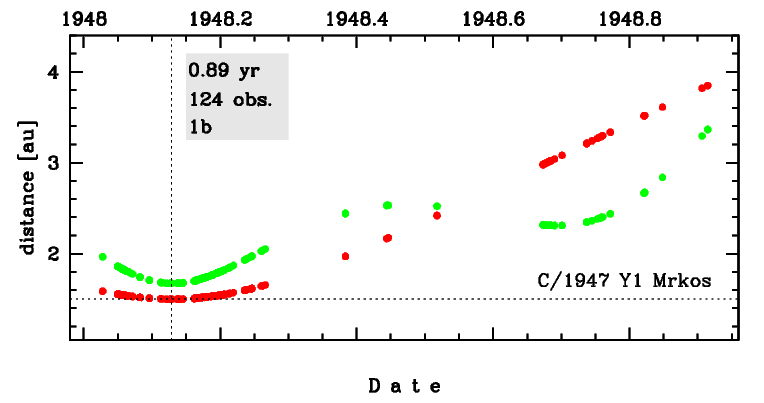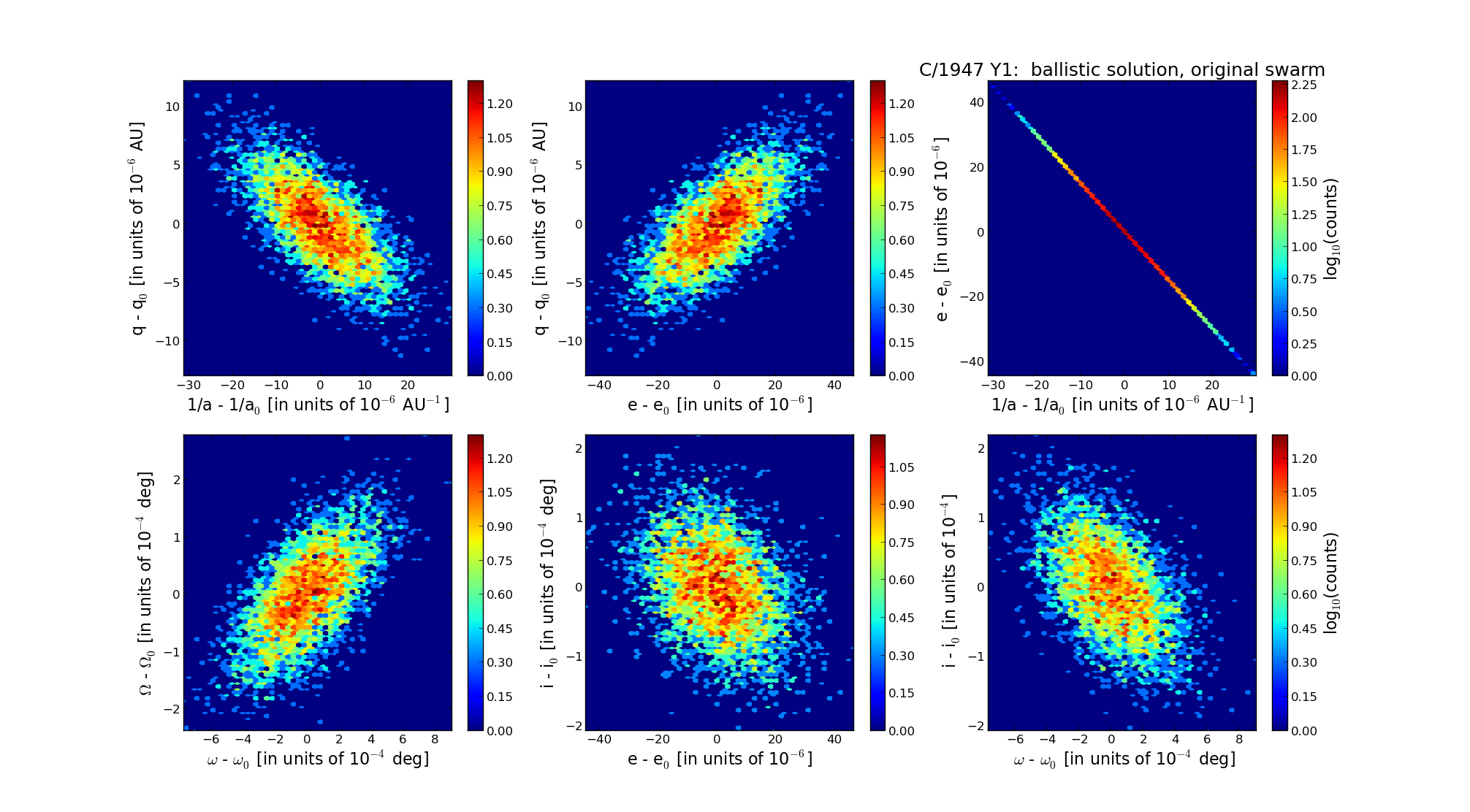C/1947 Y1 Mrkos
more info
Comet C/1947 Y1 was discovered on 20 December 1947 by Antonín Mrkos (Skalnaté Pleso Observatory, Slovakia), that is two months before perihelion passage; the comet was last seen on 30 November 1948. [Kronk, Cometography: Volume 4].
This comet made its closest approach to the Earth on 17 February 1948 (1.674 au), that is almost at the moment of perihelion passage.
Solution given here is based on data spanning over 0.890 yr in a range of heliocentric distances from 1.589 au through perihelion (1.500 au) to 3.848 au.
This Oort spike comet suffers slight planetary perturbations during its passage through the planetary system, and it will enter the planet zone as Oort spike comet in the next perihelion passage (see future barycentric orbit).
More details in Królikowska et al. 2014.
This comet made its closest approach to the Earth on 17 February 1948 (1.674 au), that is almost at the moment of perihelion passage.
Solution given here is based on data spanning over 0.890 yr in a range of heliocentric distances from 1.589 au through perihelion (1.500 au) to 3.848 au.
This Oort spike comet suffers slight planetary perturbations during its passage through the planetary system, and it will enter the planet zone as Oort spike comet in the next perihelion passage (see future barycentric orbit).
More details in Królikowska et al. 2014.
| solution description | ||
|---|---|---|
| number of observations | 124 | |
| data interval | 1948 01 18 – 1948 11 30 | |
| data type | perihelion within the observation arc (FULL) | |
| data arc selection | entire data set (STD) | |
| range of heliocentric distances | 1.59 au – 1.50 au (perihelion) – 3.85 au | |
| detectability of NG effects in the comet's motion | NG effects not determinable | |
| type of model of motion | GR - gravitational orbit | |
| data weighting | YES | |
| number of residuals | 204 | |
| RMS [arcseconds] | 1.22 | |
| orbit quality class | 1b | |
| orbital elements (barycentric ecliptic J2000) | ||
|---|---|---|
| Epoch | 1648 10 28 | |
| perihelion date | 1948 02 15.27606107 | ± 0.00036994 |
| perihelion distance [au] | 1.49138818 | ± 0.00000319 |
| eccentricity | 0.99995691 | ± 0.00001267 |
| argument of perihelion [°] | 62.089047 | ± 0.000218 |
| ascending node [°] | 199.256479 | ± 0.000073 |
| inclination [°] | 77.586851 | ± 0.000061 |
| reciprocal semi-major axis [10-6 au-1] | 28.89 | ± 8.49 |
| file containing 5001 VCs swarm |
|---|
| 1947y1a5.bmi |

